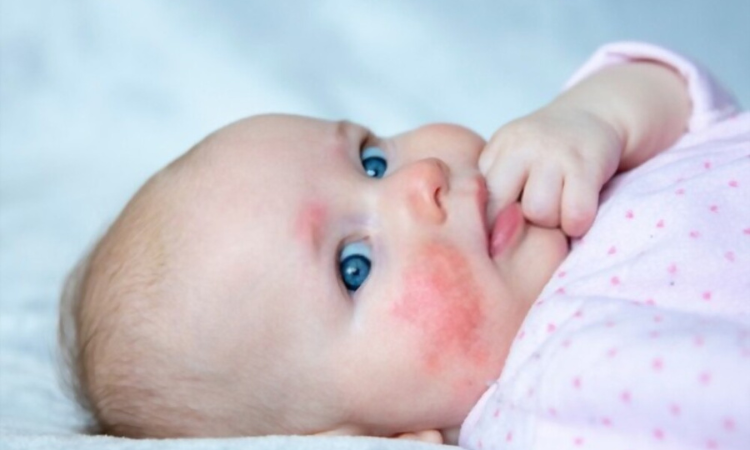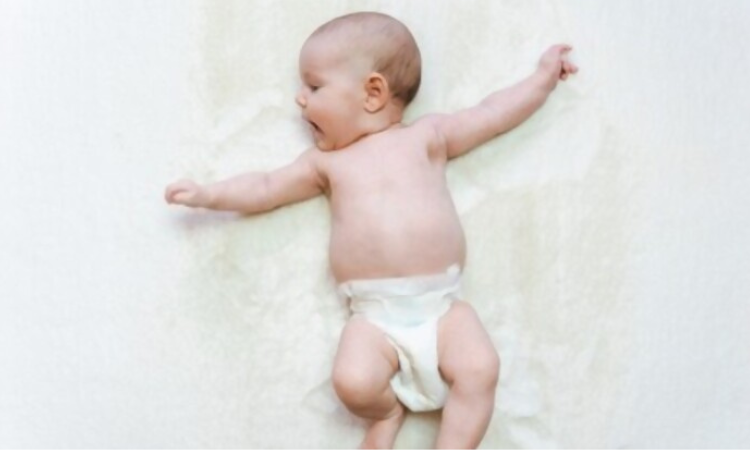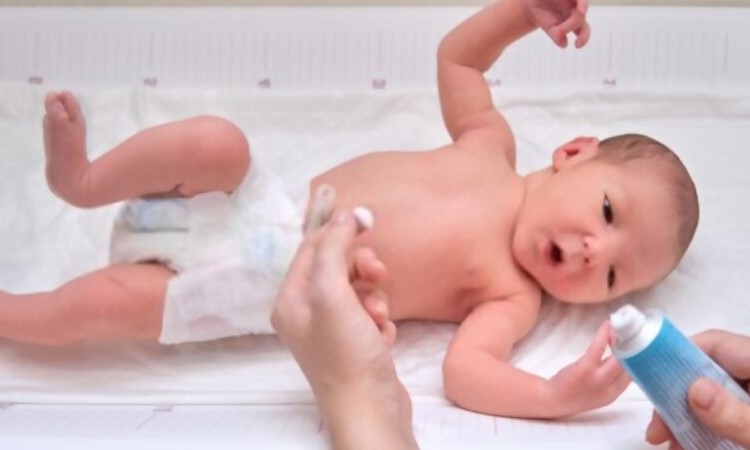Babies often have strange skin conditions like rashes, weird crusting, and lumps that are usually harmless and easy to treat. But because of them, many first-time parents have been scared enough to call their pediatrician after hours or go straight to the emergency room. It’s understandable that concerned parents would search the internet for pediatric skin condition pictures in order to put a face to their child’s rash.
To add to the anxiety, skin problems in infants often appear suddenly and dramatically, making it especially frightening for first-time parents. To avoid panic, parents should be aware of the most common skin problems in infants during their first year.
What Causes Skin Infections In Babies?
Babies have an extremely sensitive skin, which can be harmed by even slight variations in temperature. Also, because their immune systems aren’t fully developed yet, bacteria and viruses are more likely to cause them skin problems.
Heat, cold, fungus, bacteria, drooling, allergies, and extended contact with a wet nappy are just a few of the many potential causes of skin disorders in infants. Fortunately, most baby skin conditions are transient and resolve on their own. But in more serious cases, the problem may need to be fixed with creams and ointments, topical steroids, and/or pills.
Related Reading: Baby Milestones – The 1st Month
6 Common Skin Problems Infants In the First Year Of Life
Infants commonly have dry, peeling skin, particularly on their hands and feet, during the first several weeks. Some blueness of the hands and feet is common and may linger on for a few weeks. Skin disorders in infants may include acne, rashes, hives, birthmarks, and more. The causes vary from allergies and environmental changes to viral, bacterial, and fungal infections.
Following are 6 common skin problems in infants in their first year of life:
1. Infantile acne

Newborn acne is a common, generally transitory skin ailment that appears on the face or torso of a baby. Baby acne usually always clears up on its own without treatment. When acne appears after the age of six weeks, it is referred to as infantile acne. This form of acne is more likely to appear between the ages of 3 and 6 months.
Infantile acne is more pleomorphic and inflammatory, requiring more aggressive treatment than neonatal acne. Infantile acne, unlike neonatal acne, may cause scarring1. Most of the time, it isn’t caused by too much testosterone or other androgenic hormones. Infants with infantile acne appear healthy otherwise.
Symptoms: Infantile acne appears as whiteheads, blackheads, red papules and pustules, nodules, and sometimes cysts.
Causes: There is currently no known trigger for acne in infants. Genetics has been implicated as a possible cause2.
Treatment: Infant acne typically has a mild course, requires no treatment at all, and clears up within 6-12 months after the onset of symptoms. On the other hand, medication may be required in more extreme cases.
- Topical agents like topical retinoid or benzoyl peroxide are used to treat mild cases of infantile acne. They are equally effective when used singly as they are when used together3
- In severe cases, oral treatments may be required to prevent permanent scarring. And these may include antibiotics (erythromycin) or, very rarely, isotretinoin4
Related Reading: New-Born Care After Delivery At Home: 9 Practical Tips
2. Heat rash
When an infant’s sweat glands become clogged, they develop a heat rash5. As a rule, this occurs in hot and humid climates. When the sweat glands become clogged, sweat can get trapped under the skin and the blocked glands cannot clear the sweat. This brings about little red bumps and possibly tiny blisters.
Symptoms: Pinpoint-sized bumps that range in color from red to clear, most frequently appearing on the back and buttocks. It can be itchy.
Causes:
- Extreme sweating from overexposure to the heat
- Ointments used in the winter can also cause the condition in infants because they prevent sweat from escaping the skin
- An overly warm outfit or tight swaddling can also contribute to heat rash
- Heat rash on the face of a breastfed baby can be caused by lanolin put on the nipples6
- When babies are dressed in materials that prevent perspiration from evaporating normally, they can develop a heat rash
- Applying menthol ointments for coughs can lead to a heat rash in the chest
Treatment
- Make sure bedrooms are well-ventilated and kept at a comfortable temperature
- Wrap the infant in breathable fabrics
- You could also try giving your child a cool bath or pressing a cool, damp cloth on the affected area
- Sweaty clothes and wet diapers should be changed frequently
- Avoid swaddling
- Use air conditioning and fans to make the room more comfortable
- Use a light moisturizer instead of a heavy one
- Giving your kid a bath in lukewarm water may help relieve his or her itching due to heat rash
Related Reading: Night Sweats In Babies- All You Need To Know
3. Atopic dermatitis
Commonly known as eczema, atopic dermatitis is a skin condition commonly found among infants. Red, scaly patches of skin that are dry and itchy are the hallmark of eczema, and they tend to appear on the elbows and knees of infants and young children. Symptoms typically emerge between the ages of three and six months.
This skin condition lasts for an extended period of time and is therefore classified as chronic. When a baby only has a small area of skin affected, it often isn’t necessary to treat it. Infantile eczema is also often resolved by the time the child reaches toddlerhood.
Symptoms: Each kid may experience symptoms slightly differently. Some infants experience these symptoms intermittently, while others experience them constantly.
They can include:
- Pale skin, evident on the face
- Scaly, dry skin
- Reddish, raised spots (hives)
- Severe itchiness with or without redness and swelling
- Hardened epidermis
- Lesions start out as tender lumps but can turn crusty and even bleed if scratched
- Changes in the skin around the mouth, eyes, or ears
- The skin on the face, arms, and legs turns rough.
- Discoloration of the skin around the eyes or on the eyelids
Causes: Atopic eczema’s precise origin is uncertain. It has been discovered that atopic eczema runs in families and is an immunological reaction with a hereditary basis6. Eczema develops when the skin’s protective barrier breaks down. It has been found that a lack of protein filamentgrin in the skin’s outermost layer is a common cause of eczema in infants7.
Contributory factors which can act as triggers or worsen the condition include:
- Environmental factors. These include being in winter weather, using hot water for bathing, and being in dry, hot temperatures
- Allergens such as soaps, creams, detergents, house dust mites
- Both viral and bacterial skin infection in babies can exacerbate eczema8
Treatment
- Avoiding triggers, as recommended by the pediatrician
- Using a mild cleanser or body wash as prescribed by your doctor
- Cutting your kid’s fingernails short will protect against skin irritation and infections that can occur from excessive scratching
- When washing your infant’s clothes, use laundry detergents that are free of fragrances, dyes, and deodorants
- While bathing your infant, It’s important to check the ingredients of the baby soap you buy, as even “gentle” varieties may have a trace amount of smell that could cause irritation. Choose fragrance-free baby soap
- After drying your infant off from a bath, rub on some fragrance-free lotion or ointment like petroleum jelly. This ensures that the baby’s skin retains the moisture it gained from the bath
- Soft cotton clothing is best for your child, while wool and synthetics should be avoided
- Keep the baby out of extreme temperatures or dry air
- Make sure your child’s bed is clear of dust and upholstery that could harbor dust mites
- Apply topical steroid creams or calcineurin inhibitors to affected areas if an outbreak occurs
- The use of antibiotics is reserved for cases of illnesses that are particularly serious
4. Diaper dermatitis

Diaper dermatitis, or ” nappy rash,” is an inflammatory reaction of the skin of the diaper area. It is the most common skin disorder seen in young infants. About half of all babies get diaper dermatitis, and about a quarter of all visits to primary care doctors in the first year of life are for this skin problem9. Its incidence peaks at about 9-12 months of age.
Symptoms
- A red, scaly rash over the areas of the skin that are covered by diapers
- Severe, bright red, raised patches with fine peripheral scaling, typically found in the skin creases of the groin and upper thigh
- Small, raised cysts or blisters filled with fluid (vesicles) surround the rash
Causes
- Extended contact with feces and urine
- Rashes can be brought on or made worse by contact with harsh soaps, sweat, or moisture
- Secondary bacterial or fungal/yeast infection
- Excessive wetness from diaper use
- Improperly fitted diapers
- Friction from fabric or adhesive tapes
Treatment
- Clean the area of the baby’s skin that will be covered by the diaper with plain water, pat it dry, and then apply a barrier cream or moisturizer
- Frequent diaper changes will help
- After a diaper change, applying a light layer of petroleum jelly or a zinc oxide-based cream can help prevent diaper rash
- When applied for only a short time, a cream containing an antifungal or a mild corticosteroid can hasten recovery
- Be careful not to use talcum powder on a rash, and stay away from baby wipes scented with alcohol or powder
- Do not tighten the diapers
Related Reading: 11 Tips To Prevent Diaper Rash From Cloth Diapers
5. Impetigo
Impetigo is one of the most common skin infections in infants, characterized by sores and blisters. It has a very high rate of contagiousness.
Symptoms
- Typically, it manifests as red sores on the face, particularly around a child’s nose and mouth.
- It takes 1–3 days after infection for the sores to appear
- Rapidly expanding blisters that eventually burst, leaving a soggy region bordered by a brown crust, are a telltale sign
Causes: A break in the skin (from an insect bite, a scrape, or a scratch on the fingernail, for example) allows bacteria to enter the body and cause impetigo. Staphylococcus aureus and Streptococcus pyogenes are the most prevalent bacteria that cause this condition.
Treatment: When impetigo is localized to a small area of skin, especially when it is the non-bullous form, antibiotic ointment is applied for 5 days. If the doctor determines that the ointment isn’t doing the trick or that the infection has spread to other parts of the body, he or she may recommend oral or intravenous antibiotics for 7-10 days.
6. Cradle cap
Cradle cap, or seborrhoeic dermatitis, is a common, harmless skin condition that affects infants’ scalps. Seborrheic dermatitis can affect infants anywhere from 2 weeks to 12 months of age. A cradle cap will not harm your baby and will not prevent them from sleeping or eating10. It typically goes away over a period of weeks or months and is rarely seen in children older than 12 months.
Symptoms
- On the scalp, there are redness and crusty brown or yellow scales that look like fish scales.
- The texture of the scales varies from feeling dry and brittle to waxy and greasy.
Causes: It is not known for certain what triggers infant seborrheic dermatitis. Your baby’s condition may have been brought on by an overabundance of oil from his or her sebaceous glands or by a yeast that thrives in the oil. Changes in the mother’s hormone levels during pregnancy could cause the baby’s sebaceous glands to make too much oil11. Having eczema or asthmatic relative increases an infant’s risk of developing a cradle cap12.
Treatment
- An hour before giving the baby a bath, rub olive oil into the scalp to soften the scales
- For the cradle cap, you can use a special comb, but a gentle toothbrush will do the trick, too
- Mild baby shampoo should be used daily to clean your baby’s scalp
- Using your fingers or a washcloth, massage shampooed hair gently
- Brush your infant’s hair gently to remove the scales
- It may be necessary to apply a mild topical steroid cream to the affected areas in extreme cases
Conclusion
People often assume that a newborn’s skin should be perfect. However, infants and young children frequently struggle with skin problems. Rashes and other skin issues typically clear up after being treated or disappear on their own. If your infant is experiencing severe itching or oozing from the skin, you should seek medical attention.
FAQs
Babies often drool more heavily than usual when their first teeth emerge. Drool can be irritating to a baby’s skin. This may result in a harmless rash called a teething rash. Your infant may develop tiny, red, raised bumps on his or her face, neck, or chest due to the rash. When your baby’s new teeth come in or when he or she stops drooling as much, the rash associated with teething may disappear.
Milia refers to the tiny white bumps that can appear on the nose, chin, and cheeks. While they appear raised, they are smooth and nearly flat. You can wash your baby’s face once a day with warm water and mild baby soap if he or she has milia, but you shouldn’t use any other products on the skin. Don’t scrub or pinch the bumpy skin; it’s best to leave it alone. Milia usually go away on their own after a few weeks, so there’s no need to worry about getting any kind of treatment for them.


